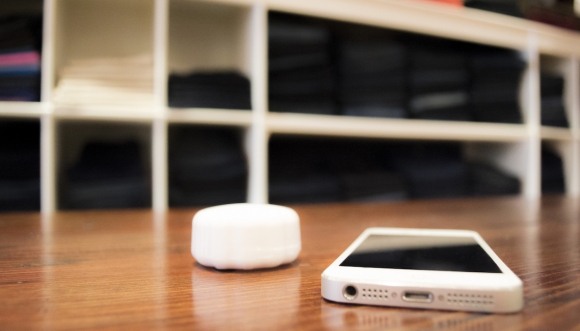Some of the biggest names in tech are pouring more money into digital ads that can follow shoppers around the store, ready to light up a smartphone screen when marketers think the time is right for a little nudge.
Swirl Networks, a Boston-based advertising software startup, says today that it’s raised a new $18 million investment round. One of the investors is Twitter Ventures, a venture-capital arm that the social media service quietly debuted about a month ago.
The money will help Swirl grow quickly and add software features that its customers want, including possible integrations with Apple Pay and the wearable devices like the new Apple Watch, chief executive Hilmi Ozguc said.
Swirl has about 30 employees now, and plans to triple its employee roster in the next year, Ozguc said. “We are really overwhelmed with these big retailers wanting to launch campaigns,” he said. Ozguc declined to disclose the company’s revenues but said Swirl is not yet profitable as it focuses on growth.
The new investment, a Series C round, brings the total amount of venture cash invested in Swirl to $32 million. The startup has become another significant bet on advertising technology in the Boston area, joining startups like Nanigans and Adelphic Mobile in drawing venture investors’ checkbooks.
Swirl is an early player in the field of advertising over digital beacon networks, which leverage small devices that emit a low-power Bluetooth signal to communicate with a smartphone. Placing an array of those beacons in a physical location can give retailers and the manufacturers they stock a new way to send coupons or other ads to people as they move through the aisles.
The idea behind beacon-based advertising is that it brings sophisticated data collection and analysis to an arm of commerce that still relies on paper coupons and special end-of-the-aisle displays to win consumers’ attention.
A shopper who lingers in the diaper section, for example, might get a digital coupon sent to their phone from a diaper brand lobbying to close the sale, or an ad from a baby-food company hoping to lure that shopper to its section of the store.
Since the technology gives retailers, ad networks, and consumer-goods sellers a new level of detail about the actual physical location of their customers, Swirl has been keen to note that interacting with those beacons should be opt-in — if you don’t give permission, you shouldn’t be tracked.
That’s in sync with guidelines from the Federal Trade Commission, which has told app developers that it’s “important to get users’ affirmative OK before you collect any sensitive data from them, like medical, financial, or precise geolocation information.”
Swirl already has rolled out its advertising tech with several well-known names, including all locations of retailers Lord & Taylor, Timberland, Hudson’s Bay, Alex and Ani, and Urban Outfitters. The startup also is implementing its physical-location ads in many Marriott hotels, Ozguc said.
Perhaps more notable than the investment itself is where the checks came from. Twitter’s investment is just the second publicly disclosed investment from the company’s new venture capital team. SoftBank Capital, the investment arm of a major Japanese telecom company, has previously backed companies like BuzzFeed, The Huffington Post, and Zynga. Another Swirl investor, Hearst Ventures, is tied to one of the country’s biggest publishers.
Twitter declined to comment for this story, but Ozguc said the potential benefit for the social media company is clear: it gets a deeper look at a new market for advertising on mobile devices, and a “shortcut” to possible deals down the road.
“In-store mobile advertising is a potentially huge source of advertising revenue for them, and for any other mobile publisher,” he said.
For a small startup, the validation of bigger names in the industry also can help win over reluctant retailers who are otherwise skittish about working with a young company.
“If you’re out talking to retailers and they say, ‘Who are you guys? Are you going to be here tomorrow?’ Well, look at our backers,” Ozguc said. “It completely changes the discussion.”
Swirl makes money in three ways. It sells software subscriptions to retailers who want to use its technology to build an ad network in their stores. The startup also gets a percentage of any advertising buys that are made by outside marketers, and a percentage of the money that retailers might spend to get their store’s offers featured in third-party shopping apps that partner with Swirl.
The indoor digital advertising market is still in its very early stages, and it’s not yet clear whether retailers, advertisers, and the all-important consumers are going to be on board with the new technology.
Adam Silverman, a technology analyst for Forrester Research, said his firm’s surveys indicate that 70 percent of brick-and-mortar businesses are testing out beacons for in-store advertising and data collection. But getting old-line retailers to commit to a deal that brings another company into the relationship with a shopper can be a hard sell, Silverman said.
“Retailers are still trying to figure out what it means for them, so they’re unwilling to sort of crack open the beacon cookie jar, if you will, and let everyone have at it,” he said. “Once they understand the technology and how customers will react, at that point they might allow that data to be captured in the store and leveraged for advertising.”
From: betaboston.com








Leave a Reply
You must be logged in to post a comment.